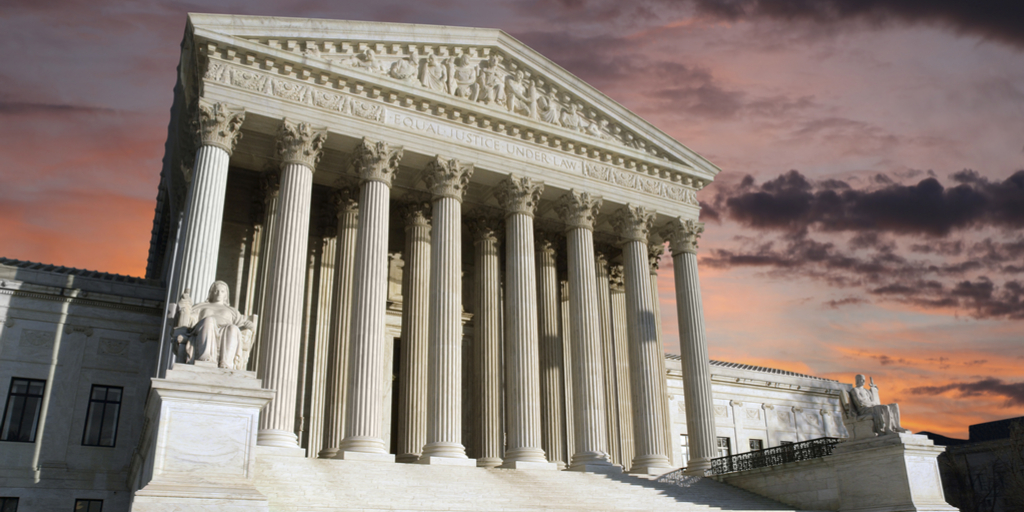Major Questions about Chevron
James R. Rogers recently wrote for Law & Liberty that the Supreme Court’s decision in West Virginia v. EPA last term established “no new doctrine.” By this, he seemed to mean that there was nothing in the decision that had not already been outlined by the Court in a series of cases that have narrowed the scope of what is known as Chevron deference. This is the principle that the Court established in a 1984 case, NRDC v. Chevron, that lower courts should defer to an agency’s interpretation of its statutory authority where that interpretation was “reasonable.”
But in West Va. v. EPA, it is more likely that the Court has now set out a new standard—the Major Questions Doctrine—for determining when an administrative agency has stepped beyond the bounds it has been given by Congress. Rather than the end of what Mr. Rogers sees as the Court’s innovations in this area, it is more likely to be the beginning of a new era, where the Major Questions Doctrine (MQD) supersedes Chevron deference. The courts will decide what is “reasonable,” not the agency.
Although the EPA’s regulation at issue in the case could easily have been categorized as extreme and unprecedented—it required existing coal-burning power plants to cease or diminish operations and invest in other power systems—the use of the MQD had little to do with that. It was simply a finding, 6-3, that this rule went too far and was not authorized by the Clean Air Act. Although issued under the name “Major Questions Doctrine,” the same idea could be applicable in any case where the Court believes an administrative action goes beyond what was specifically authorized by Congress.
In this sense, West Va.’s outcome was no different from the theories the Court used in narrowing Chevron; it was just issued under a different rubric. But that isn’t the end of the matter. Despite its name, the MQD is broadly applicable to any case where an agency exceeds its remit. Its issuance could explain why, in recent cases described below, the Court has simply stopped invoking or citing Chevron where it would normally be applicable. Its use might also eliminate the need for litigants to use the Non-Delegation Doctrine (NDD) as a blanket challenge to the legal basis of an agency’s authority; the MQD could do just as well for this purpose. In other words, adopting the MQD as a substitute for Chevron could simplify the whole process of challenging the legal underpinnings of agency rules and regulations.
It would not be surprising to find that the conservative Court was dissatisfied with the degree of latitude that the lower courts, under Chevron, had been giving to agencies. After all, the Administrative Procedure Act states that “the reviewing court shall… interpret constitutional and statutory provisions, and determine the meaning or applicability of the terms of any agency action,” and the Senate Report on the APA said that judicial review of agency powers “is indispensable since its mere existence generally precludes the arbitrary exercise of powers or the assumption of powers not granted.” Chevron deference would seem inconsistent with these congressional instructions. Yet, other than Chevron, the Court does not have a standard that would guide lower courts in addressing the scope of administrative authority.
Then there is the opposite question, addressed by the NDD—whether an agency was given too much authority. The Constitution says that “all legislative authority herein granted shall be vested in a Congress of the United States” and the courts have interpreted this to mean that, under the Constitution’s separation of powers, Congress cannot delegate its legislative authority—generally understood to mean policy-making—to executive agencies.
But to make an argument based on the NDD, a litigant had to argue that the specific words of a statute gave the agency unconstitutional legislative powers. In practice, this was a difficult standard for the courts to apply. A good example was Whitman v. American Trucking Association, a 2001 case in which the ATA challenged the broad authority that Congress granted to the EPA in the Clean Air Act as an unconstitutional delegation. Writing for the Court in that case, Justice Scalia cited the key language of the act as follows: “to set primary air quality standards ‘the attainment and maintenance of which…are requisite to protect the public health…’” The word “requisite,” he concluded, sufficiently hedged the delegation to meet the requirements of the NDD.
To implement the MQD, on the other hand, all a litigant would have to show is that the agency’s regulations exceeded its authority from Congress, not that it was an unconstitutional delegation.
All this suggests that West Va. v. EPA is not the end point of the Court’s use of the Major Questions Doctrine, but the beginning.
After the ATA decision, some members of the Court then turned to questioning Chevron itself. In a 2013 case, City of Arlington v. FCC, the city challenged the FCC’s authority to set the period during which a locality had to make a siting decision for wireless facilities. Justice Scalia, long a supporter of Chevron, authored the decision in favor of the FCC on Chevron grounds, but Chief Justice Roberts dissented, joined by Justices Kennedy and Alito.
Roberts’ dissent quoted Chief Justice Marshall’s famous statement in Marbury v. Madison: “It is emphatically the province and duty of the judicial department to say what the law is.” But then he continued that in finding Chevron deference a reviewing court must determine that Congress “has in fact actually delegated to the agency lawmaking power over the ambiguity at issue.” This was a new and much narrower interpretation of Chevron and would weaken it substantially. To remove all doubt about his position, Roberts ended his dissent with this: “We do not leave it to the agency to decide when it is in charge.”
This was not the last Chevron case to reach the Supreme Court. In 2018, Pereira v. Sessions was decided 8-1 (Alito dissenting), but the Court did not invoke or even mention Chevron because it found no ambiguity in the statute involved. This was one of Justice Kennedy’s last cases before his retirement, and he concurred in the decision but noted his unease with Chevron: “It seems necessary and appropriate to reconsider in an appropriate case, the premises that underlie Chevron, and how courts have implemented that decision.”
Then, in 2022, two other cases reached the Court, both involving government reimbursement of hospitals. There was certainly ambiguity in the statutory language, but the Court managed to resolve both without citing Chevron. This suggests that the Court no longer supports Chevron deference, but also that it does not want to overrule a unanimous 1984 Supreme Court decision. Instead, it has introduced a new standard, the MQD, under which the courts can decide whether statutory language alone supports an agency’s regulation.
If so, in the future, when lower courts confront a challenge to an agency’s authority from Congress, it may well be considered within the ambit of the MQD, where the key question is whether Congress gave the agency the authority it claims, without any consideration by the court whether agency’s claim is “reasonable.”
All this suggests that West Va. v. EPA is not the endpoint of the Court’s use of the Major Questions Doctrine, but the beginning.


